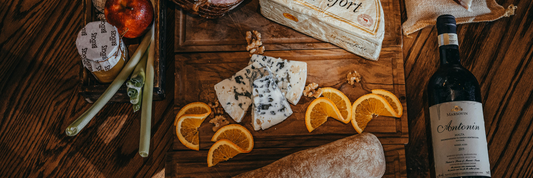Biodegradability is critical in today's environmentally conscious world. Biodegradable materials, such as paper, provide environmentally acceptable alternatives to plastics. This article investigates the biodegradability of paper, the conditions for breakdown, and the benefits in sectors such as food packaging.
What is paper biodegradable?
Meaning of Biodegradable and Paper Biodegradable
The ability of a material to degrade naturally and return to the environment, eventually becoming part of the natural ecosystem without causing harm, is referred to as biodegradability. Paper is a biodegradable substance, which implies that it can degrade and be digested by microorganisms under certain conditions, reducing its environmental impact.
Condition for Paper to Biodegrade
Several factors influence paper biodegradation, including temperature, humidity, and the presence of microorganisms. Paper can degrade rather quickly under the correct conditions, generating carbon dioxide and water as byproducts. Adequate oxygen levels, as well as the presence of specific bacteria and fungi, are required for successful paper biodegradation.

Is 100% Paper Biodegradable?
While paper is commonly thought to be biodegradable, whether 100% paper is biodegradable requires some clarity. Most modern paper products have additives like dyes, coatings, and adhesives that might impede biodegradation. These additives must frequently be carefully selected to guarantee that they are likewise environmentally benign and degrade with the paper.
The production process of paper
The following is a step-by-step breakdown of the paper manufacturing process:
Step 1: Wood Fibers. Trees give wood fibers, which are used to make paper.
Step 2: Pulping. Wood fibers are physically or chemically broken down into smaller bits.
Step 3: Combine the fibers. To make a pulp slurry, combine fibers with water.
Step 4: Make paper. Spread the pulp, then drain the water and press to make a wet paper sheet.
Step 5: Allow to dry. To dry the paper sheet, use heat and air.
Step 6: Cutting. the dry sheet to the appropriate sizes.
This methodical process converts wood fibers into the flat paper material we typically use.
Types of paper commonly used in daily life
In our daily lives, we utilize several types of paper, ranging from newspaper and notebook paper to packaging materials. Newsprint, bond paper, coated paper, and kraft paper are some of the most prevalent types. Each category has distinct properties and applications.
Paper Biodegradable and Non-Biodegradable
|
|
Biodegradable Paper |
Non-Biodegradable Paper |
|
Characteristics |
It has minimal additives and coatings. |
Chemically treated or laminated with non-biodegradable materials. |
|
Degradation |
Naturally degrades over time. |
Degradation is complicated due to synthetic changes or composite layers. |
|
Impact on Soil |
Assimilates into the soil and becomes a part of the ecosystem. |
Does not easily integrate into the environment, which may result in pollution. |
|
Byproducts |
Carbon dioxide and other natural components are released. |
Long-term environmental repercussions are possible. |
|
Responsible Disposal |
Minimal environmental impact. |
To minimize negative consequences, proper disposal is required. |
Is Kraft Paper Biodegradable?
Kraft paper, which is created from wood pulp, is widely thought to be biodegradable. Because of its durability and strength, it is commonly utilized in packaging. The biodegradability of kraft paper, like that of other forms of paper, can be influenced by any additives or coatings used during the production process.
Kraft paper food packaging is popular today

Paper for food packaging products
Food packaging items is one significant application of paper as a biodegradable material. Paper packaging has gained popularity due to its eco-friendliness and promises to reduce plastic waste.
Benefits of paper packaging products
Packaging original paper offers several benefits, including:
- Sustainability: Paper is a renewable resource, and using it for packaging decreases reliance on materials derived from fossil fuels.
- Biodegradability: Natural decomposition of paper packaging reduces environmental impact.
- Customizability: Paper is easily printed on, making it ideal for branding and information distribution.
- Versatility: Paper may be molded and folded into a variety of shapes and sizes to accommodate a variety of objects.
Why choose paper over plastic packaging
Opting for paper over plastic packaging has become a conscious choice for many consumers and businesses due to the following reasons.
- Reduced Plastic Waste: Plastic packaging contributes significantly to pollution and waste. The paper offers a more sustainable alternative.
- Biodegradability: Paper breaks down naturally, whereas plastic takes centuries to decompose.
- Environmental Concerns: Public awareness of plastic's negative impact on the environment has led to a shift toward more eco-friendly options.
Note when using paper packaging products
A variety of compelling factors have driven many individuals and businesses to choose paper over plastic packaging:
- Reduced Plastic trash: Plastic packaging contributes significantly to environmental pollution and trash accumulation. Paper is a substantially greener option due to its intrinsic biodegradability, as opposed to plastic's sluggish disintegration over generations.
- Environmental knowledge: Increased public knowledge of the negative environmental repercussions of plastic use has resulted in a significant movement toward eco-conscious alternatives.
Lastly, biodegradable paper is an environmentally friendly option with natural decomposition and several applications such as food packaging. Choosing paper over plastic helps to create a cleaner environment, but proper disposal and recycling are required to reap the benefits.




